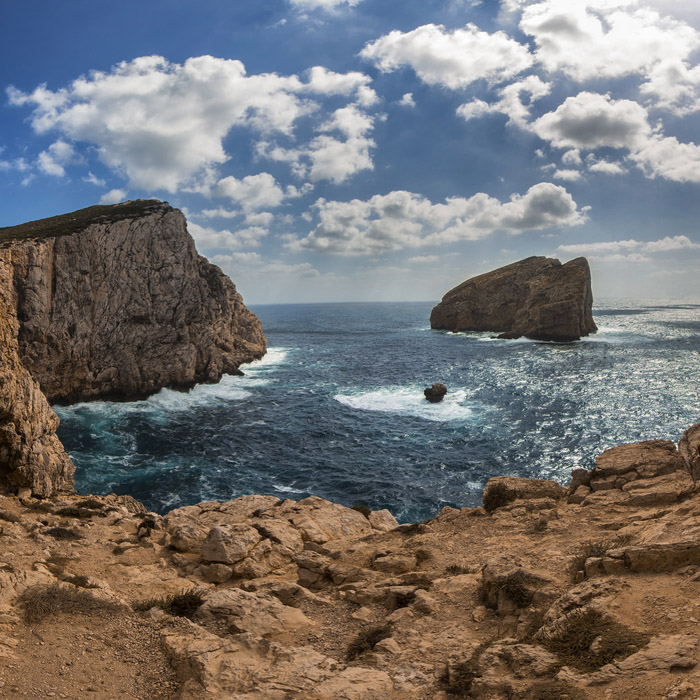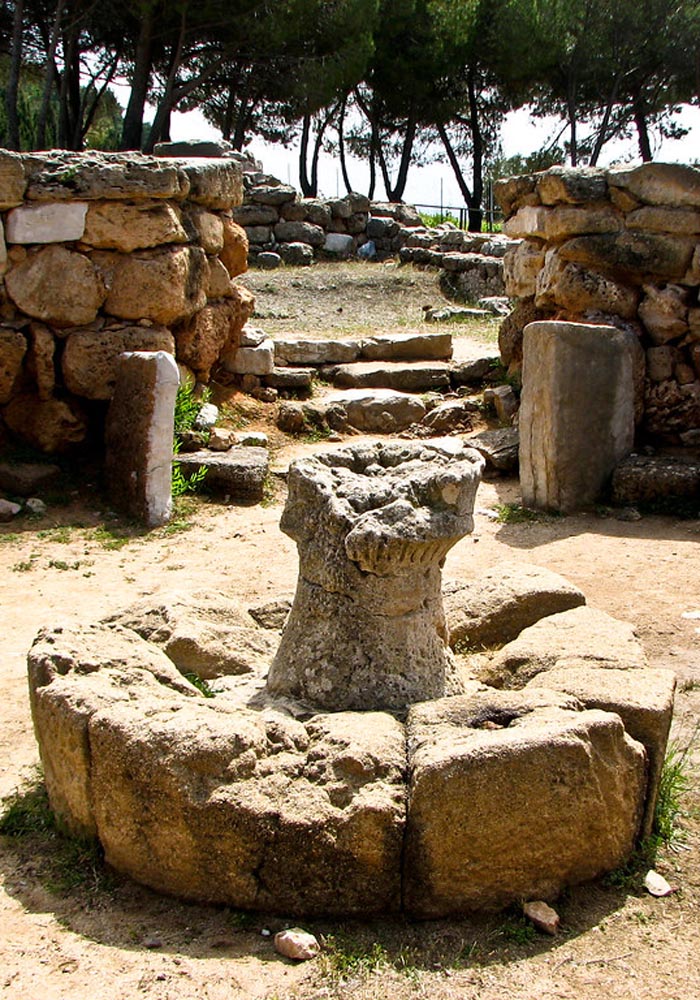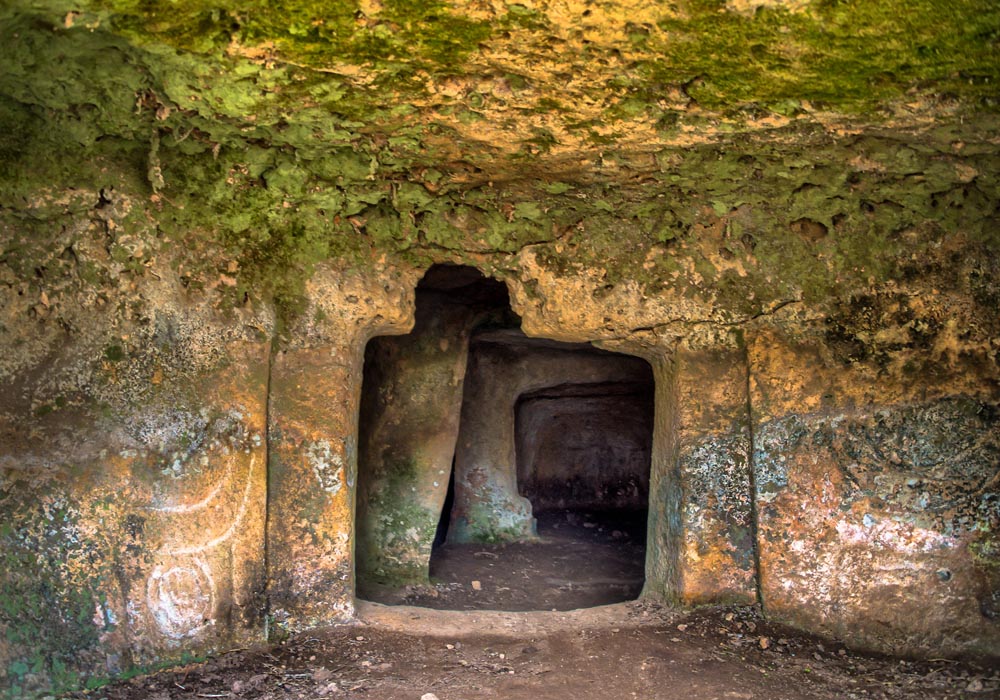Geology
About 190 million years ago all of Sardinia was still part of southern France. At that time, in the depths of the sea, the calcareous system began to form.. it will characterize the large bay of Alghero and the bay of Porto Conte. The calcareous rock is formed on the ocean floor, thanks to the overlapping of skeletons and shells of marine organisms that lived in that remote epoch. It was in this period (Jurassic) that the great aquatic reptiles called Plesiosaurs dominated the salty waters of the future Alghero as well.
The epochal change takes place around 24 million years ago when the Sardinian-Corsican block detaches from the Franco-Iberian continent, starting the counter-clockwise rotation that will take it to the Italian peninsula. About 6 million years ago the tectonic settlement that makes Capo Caccia, Punta Giglio and all the smaller islands that we can now admire in their jagged beauty stand out.
The last important geological event that we must remember is the detachment that Corsica and Sardinia suffered from 1.4 million until 22,000 years ago. In this period archipelagos of great beauty are formed and the alternation of glaciations makes human colonization of Sardinia possible by exploiting the Tosco-Corso arch.
History
Thanks to the glacial period, man began to live in Sardinia. The first evidence we have in the Algherese area dates back to the Ancient Neolithic period around 6000 BC The Green Cave of Capo Caccia gives us fictile material, we should not be surprised that it is from the caves that we find the main archaeological "sources" that we possess because our ancestors favored them as a safe shelter with homogeneous temperatures during the seasons.
From 3500 BC the great "common culture of the Mediterranean" also pervades Sardinia. That living sea that allowed commercial and cultural exchanges transmitted the religiosity linked to the powerful and virile figure of the God Taurus. He is also depicted in the Domus de Janas, which are beginning to be excavated throughout Sardinia. The metal age certainly created the main prerequisite for the future flourishing of the Nuragic Civilization. In Sardinia the wealth of Copper and the production of Bronze (using tin imported from northern Europe) determined the development of civilizations that needed to defend themselves and demonstrate their strength through the exceptional forms of megalithism that culminate in the Nuraghe. From 2700 BC therefore a real Age of Metals is developed. From 1500 BC the Nuragic Revolution invests the whole island making this agro-pastoral culture one of the most important in the Western Mediterranean. Nuraghe, Sacred Wells, Tombs of the Giants and the same Giants of Monte Prama are the direct testimonies of the magnificence of our ancestors.
The Nuraghic civilization suffered a progressive decline during the middle Iron Age when new processing techniques supplanted the "wrought iron" and allowed the manufacture of tools and weapons in Iron and Steel. The influence of Carthage on the island will be broken by the great Rome, the largest empire the world has ever seen. The settlement of ‘’ Nynphaeus Portus ’’ in the bay of Porto Conte is just Roman.
We will have to wait for the medieval age to build our Alghero.




